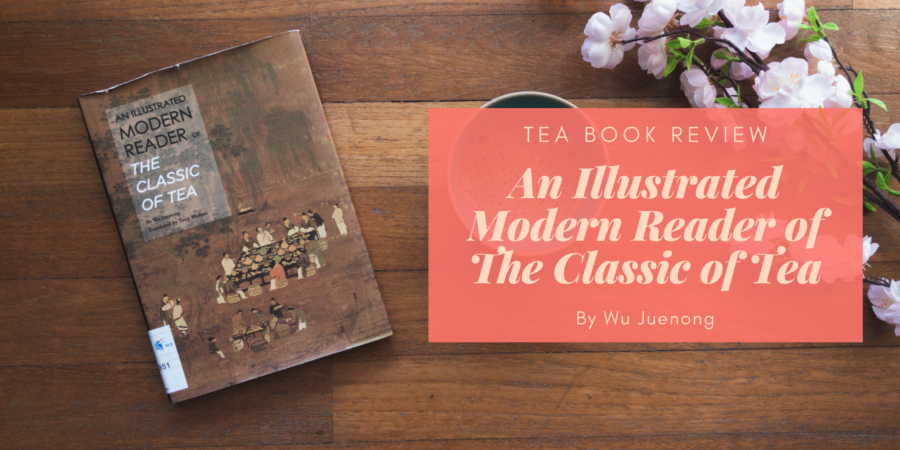I saw this in the NLB and was very intrigued because I wanted to know what kind of illustrations were inside. And also because I’ve never read The Classic of Tea (茶经) and really need to remedy that. This modern reader was great because it provided both a translation and a commentary on The Classic of Tea.
The Classic of Tea is divided into ten short chapters:
- The origins of tea
- Tools used in the picking and manufacturing of tea
- The manufacture of tea
- Vessels for making and drinking tea
- Roasting tea and boiling tea
- Tea drinking
- Historical material on tea
- Tea producing areas
- Omitting tea implements and vessels
- Hanging scrolls for The Classic of Tea
Each chapter comes with a translation of the original text, followed by an abridged commentary by Wu Juenong (1897-1989), an agricultural scientist and economists who was also “the founding figure in the revival and development of the modern Chinese tea industry.”
Because the Classic of Tea was written in the Tang dynasty, all the information is centred around how tea was drunk during that time. This does leave a pretty big gap as to how things have changed and I found that the commentaries play a valuable part in linking the tea practices from Tang to modern-day (or more accurate, 20th century).
The only part of the commentary that caught my eye is the claim that “no other nation has discovered documentary records of tea earlier than those of China, so that it’s possible to say with some certainty that China was the earliest country to harvest, process, and drink tea.” If I’m comparing this claim to what van Driem has researched in The Tale of Tea, the origins of tea being consumed in a more general sense might lie in Laos, Myanmar, Northern Thailand and the Yunnan province before it became part of China. And while we could argue that tea drinking culture first developed in Southern China, we do have to remember areas like Yunnan have been governed as an autonomous region in the past. So a part of me wonders if Juenong was being a bit overly specific here to lay claim to tea as a solely Chinese product rather than sharing credit that there were various people, not all of whom would be considered Chinese today, who had discovered the tea plant and perhaps consumed it in various forms for its various properties before it became The Chinese Drink.
My personal opinion (I am allowed to digress this is my blog) is that the tea tree’s natural home would be in the Yunnan/Myammar/Northern Thailand area and it would have been used in various ways by the people living there. From there, tea made its way into China gradually, first becoming a Southern drink and then around the Tang dynasty, a Chinese drink. Could we say that tea is purely Chinese? It is a little bit arguable, given the borders of China was in flux for so long, but I think we can agree that China established a tea-drinking (emphasis on the drinking part, since the eating part is not as clear for me) habit first.
In other words, if we take another statement in the book, i.e. that “botanists in China […] have concluded that the theory that the tea tree originated in southwest China is correct” and modify to say that ‘botanists have concluded that the theory that the tea tree originated in regions now known as southwest China is correct’, we would be a lot more accurate in drawing attention to the origins of tea and acknowledging the fact that borders do change as time passes.
Pedantic point* aside, An Illustrated Modern Reader of The Classic of Tea is a great work for anyone who wants an introduction to this classic. The illustrations are mainly pictures of people drinking tea and come with fairly detailed explanations of how the picture would have reflected tea culture at that point in time, enhancing the content of the book.
*Note: I did wonder about whether I should leave three long paragraphs about how we can define the True Origin of Tea in a book review but I do feel that as we slowly gain a more holistic understanding of tea and its history, accuracy becomes important especially since Northern Thailand and Myammar aren’t talked about much when we’re talking about tea areas and tea history.
